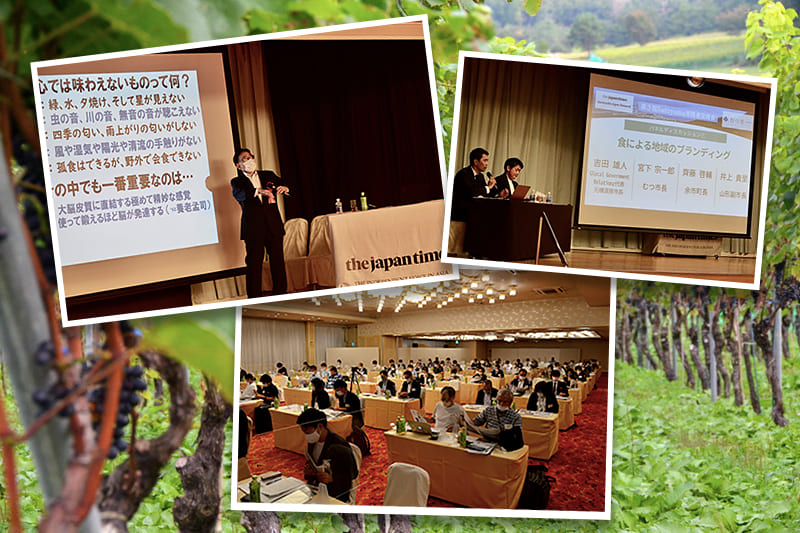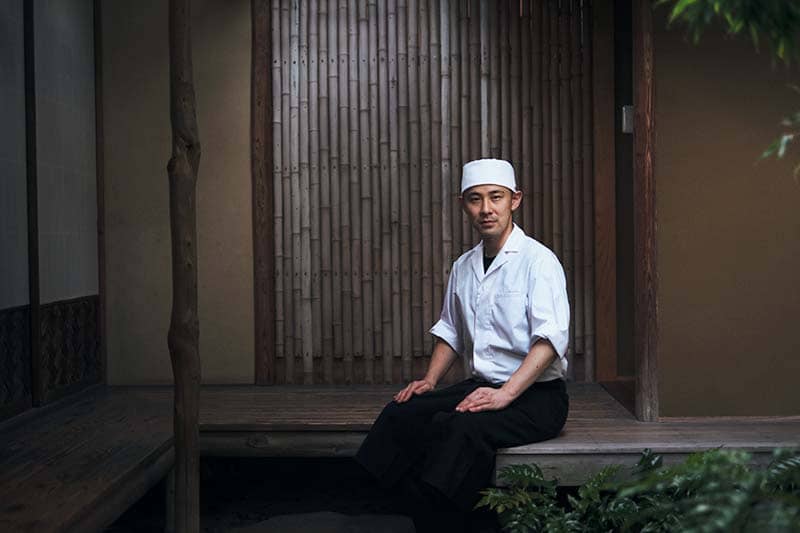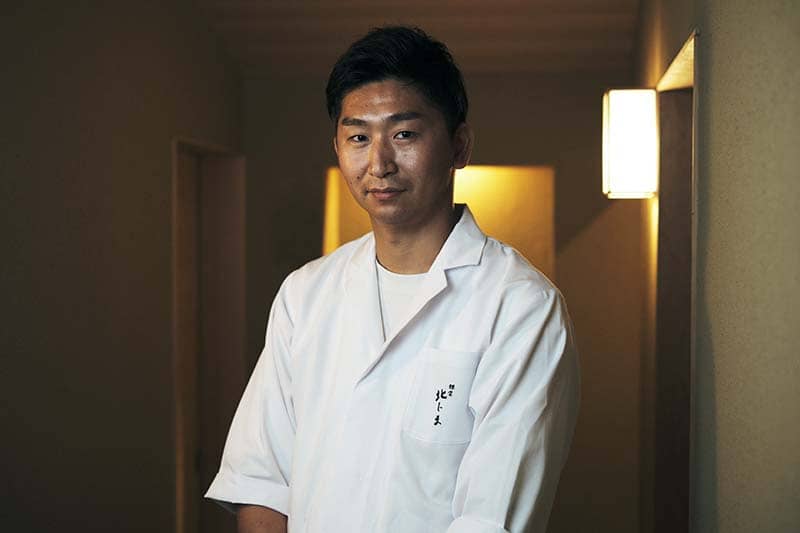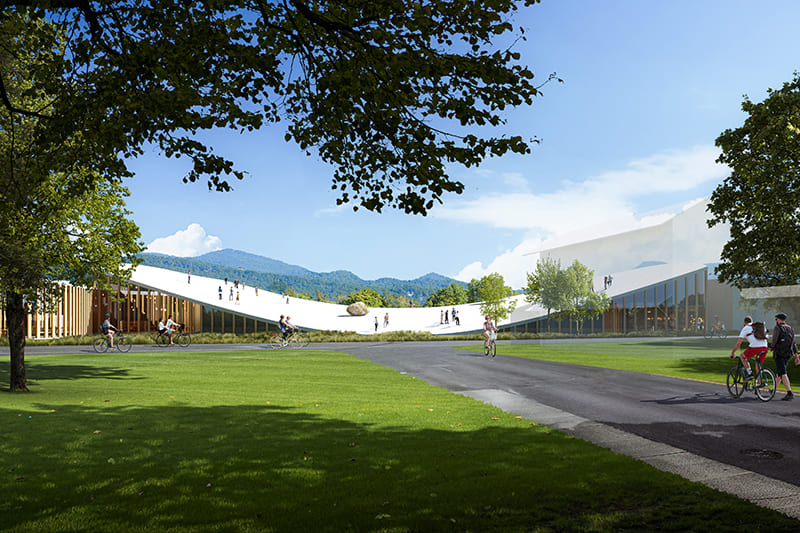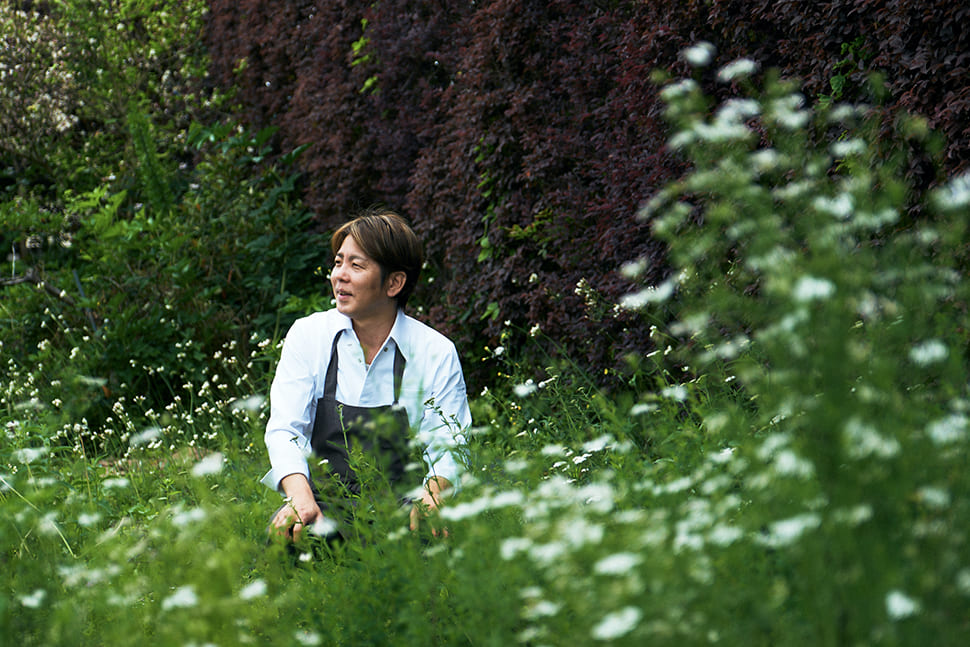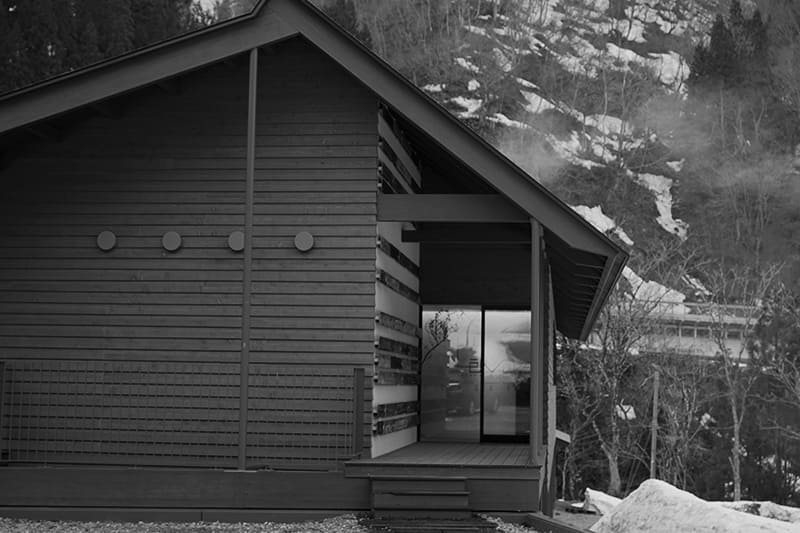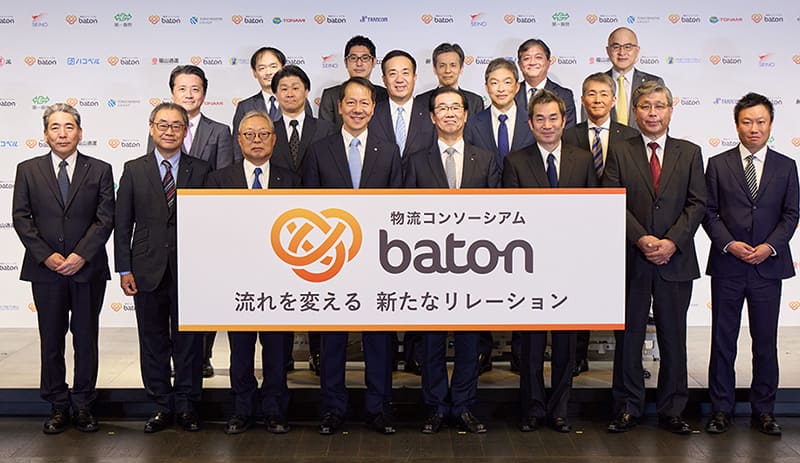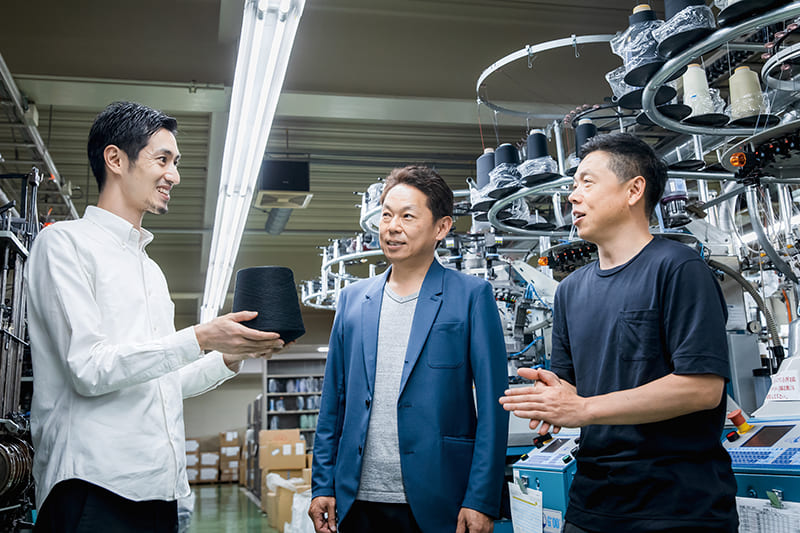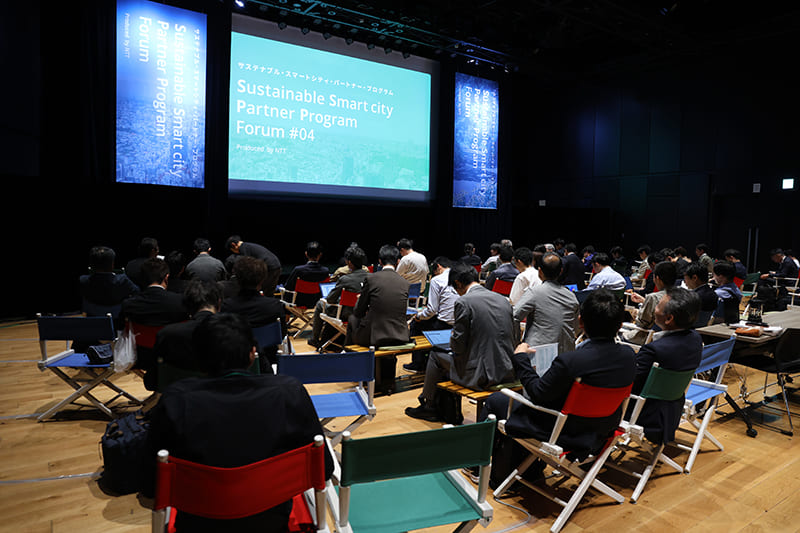April 23, 2021
Dancing the cycle of birth and death at Kiyomizu Temple
Dance Base Yokohama, Artistic Director
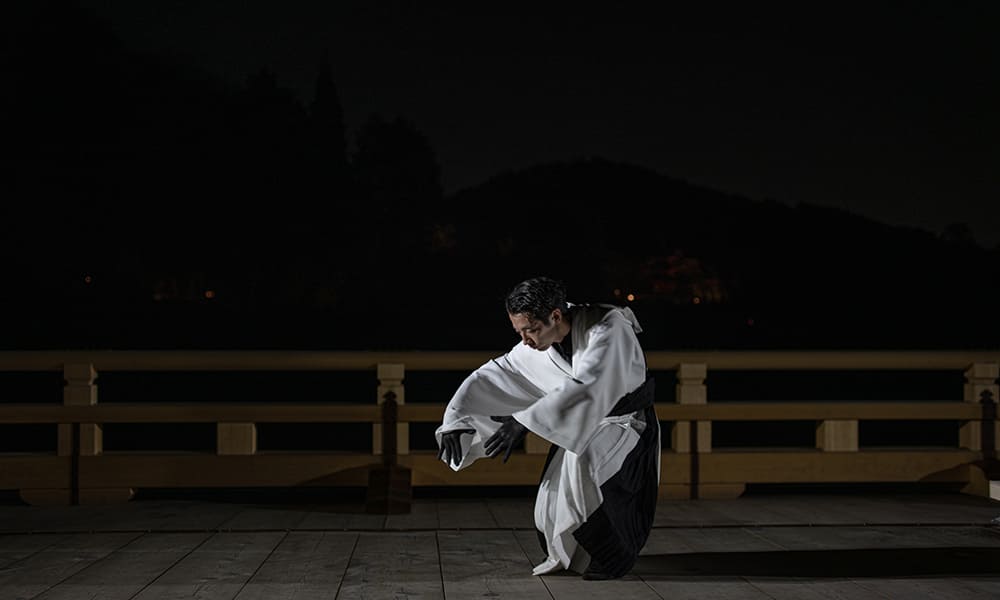
On March 11, 2021 — exactly 10 years after the Great East Japan Earthquake and a year after the day when the World Health Organization declared COVID-19 a pandemic — “Re:Incarnation,” a performance offering by young Japanese creators, took place at Kiyomizu Temple in Kyoto. Mirai Moriyama, who has been involved in the creation of numerous works around the world, led the performance as the general director.
It was 6:30 in the evening and the temple was already in twilight. A small audience of approximately 20 people walked through the temple’s mountainside grounds, led by a guide. Paper lanterns were lined up about a meter apart along the long narrow staircase, dimly lighting our footsteps. Proceeding a little further, a figure dressed in a white costume appeared on the opposite side of a stream. Faint sound from the speakers (designed by Jukan Tateisi) overlapped with the natural sounds of the wind and trees, as well as Moriyama’s voice reading a text. Proceeding to the next area, another man dressed in the same costume was crouched down and nestled close to a round rock. His body, inhabiting the darkness, twisted as if attempting to have a dialogue with nature, which changed the mood of the place. Along with Moriyama, nouseskou and Daisuke Omiya partook as performers. They were dressed in the same costume, designed by Tamae Hirokawa, but with their faces covered by masks, anonymity was maintained throughout the performance.
For this Kiyomizu Temple project, Moriyama collected physical movements and sounds representative of eight selected locations in Kyoto where he felt energies, which were then remapped to eight locations within the temple, envisioning a new physical map. Moreover, the performance was inspired by traditional kusōzu paintings depicting the nine stages of the decay of a corpse. Upon learning this inspiration and having walked around the temple grounds, it seemed as if the performers’ bodies that metamorphosed into butoh dancers began to overlap with decaying corpses from kusōzu paintings. After visiting the eight locations within the temple grounds, including the garden, the figures of arhats and the West Gate, Moriyama’s body was finally enshrined as an offering at the stage of Kiyomizu. Toribeno, the district surrounding Kiyomizu Temple, is one of the three major funeral sites in Kyoto. During the Heian Period, when commoners who died of plague or famine were not allowed to build graves, they were laid to rest by aerial burial that returned their bodies to nature. The stage of Kiyomizu, a ledge extending over the cliff overlooking Toribeno, was built for the purpose of dumping those commoners’ corpses into the valley beneath the stage. It is said that Kiyomizu Temple was built to mourn the many dead who were buried there.
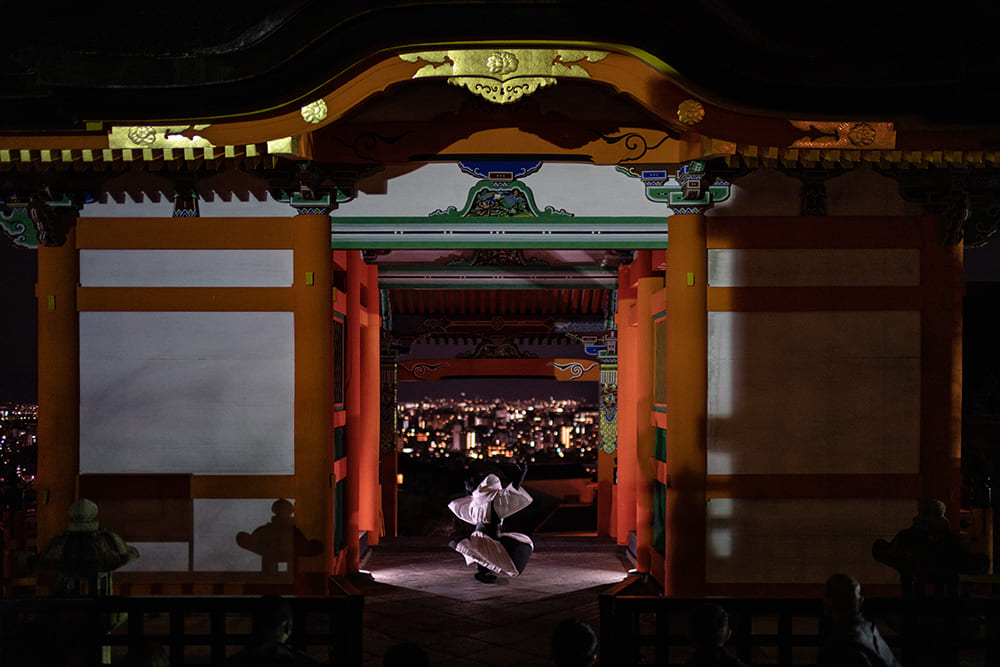
As such, the stage of Kiyomizu was indeed a place suited for conducting a rite that connects this life with the afterlife. Moriyama stood tall in the middle of the stage, took a deep breath, then sat down to slowly move in all directions in a ritualistic manner, gradually drawing a circle with growingly intense movements. Finally, when he took his mask and costume off, Moriyama appeared as himself, as a human being. Could this be signifying the return to life after reincarnation, or yet another death? Flowing lines in fluorescent green that appeared over his collapsing or reviving body became the very symbol connecting the past and the future, as if representing a soul that had gone through repeated reincarnations.
There are two important points to be addressed regarding this project. First, despite Moriyama’s interest in the primordiality of the body that within the cycle of life coexists with nature before the “body that is seen,” he has also taken layers of historical and anthropological approaches, along with geographical and climatic research, which were then melded to create a strong contemporary work. Second, the reconsideration of the personal relationship between the subject and the audience must be mentioned. The experience of immersing oneself in nature, outdoors or in the darkness, opens up our umwelt, which had been closed off by the modern world. Coincidentally taking place at a time when live performances were restricted due to COVID-19, this experience reawakened our bodily senses, invited us to experience the heightening of our five senses and reminded us of the lack of the special communication that can only be achieved through live performances.
Ruminating on the cycle of birth and death, and reconsidering the nature of life, are exactly the way of life for dancers, who since ancient times have been connecting lives through the dedication of their bodies. The performance, which showed us the determination and strong will of Moriyama and some of the best Japanese creators, was released from Kiyomizu into the darkness of the universe, as a prayer for the world.

